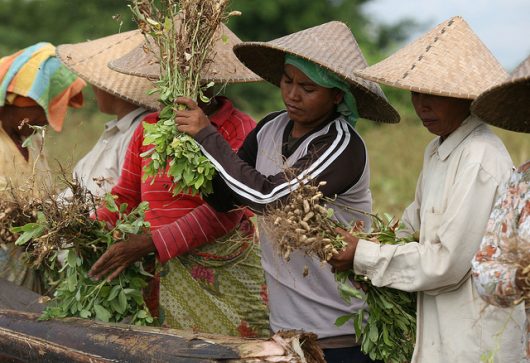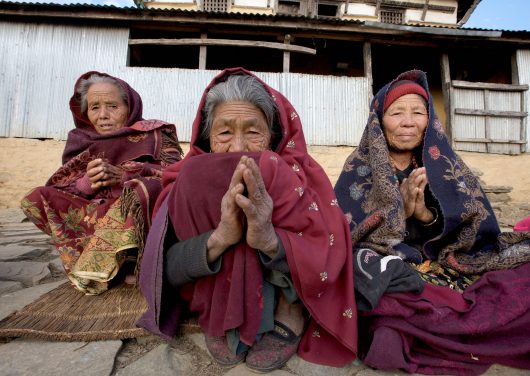 According to the Center for Disease Control and Prevention (CDC), an epidemic is a significant and sudden increase in the number of cases of a particular disease in a specific area or within a certain population. Epidemics can present themselves all over the world. However, epidemics are most common in impoverished, war-torn and developing countries.
According to the Center for Disease Control and Prevention (CDC), an epidemic is a significant and sudden increase in the number of cases of a particular disease in a specific area or within a certain population. Epidemics can present themselves all over the world. However, epidemics are most common in impoverished, war-torn and developing countries.
Medical humanitarian aid can help end epidemics in many impoverished countries. Most countries that receive foreign humanitarian aid are not properly equipped to deal with disease outbreaks, nor do they have the trained medical professionals needed. This is how a disease outbreak quickly turns into an epidemic.
Many international medical relief groups focus their efforts on controlling epidemics by providing adequate medical training, professionals and equipment. Listed below are some of the international medical relief groups that are working toward ending epidemics.
Medical Teams International
Medical Teams International is a Christian-based international relief group that has been using medical humanitarian aid to help end epidemics. The group works by delivering medical supplies and trained volunteers to areas in need. The mission of the group is to provide medical, dental, humanitarian and holistic relief to diverse areas without discrimination.
For over 25 years, Medical Teams International has been providing relief for refugees in impoverished and war-torn countries. For example, in 2017 the United Nations declared a famine in South Sudan as a result of the civil war that has been ongoing since 2013. Shortly after the declaration, Medical Teams International dispatched massive relief efforts to combat the Cholera and Malaria epidemics.
Currently, Medical Teams International has provided medical humanitarian aid to over 520 thousand Sudanese refugees, severely curving the disease epidemics in that area.
Médecins Sans Frontières (MSF)
Medecins Sans Frontieres, also known as Doctors Without Borders, is one of the most well known international medical-based relief groups in the world. For over 45 years, the group has dispersed trained medical professionals and medical humanitarian aid across the globe. Medecins Sans Frontieres is also on the cusp of many medical initiatives in impoverished countries.
Medecins Sans Frontieres is known for tackling large disease outbreaks and epidemics in poor and dangerous areas. In 2017, Medecins Sans Frontieres dispatched relief efforts to Uganda after the country was declared in a state of humanitarian emergency. The group focused its efforts on the recent Cholera outbreak spreading through Uganda, setting up multiple Cholera clinics to help treat and prevent the spread of Cholera to other refugees in Uganda.
Direct Relief
Direct Relief is another nonprofit humanitarian aid organization that primarily focuses on medical relief to devastated areas. The goal of the organization is to provide proper and comprehensive medical aid for impoverished areas and emergencies. In 2017, Forbes ranked Direct Relief among the top United States charities.
Over the past five years, Direct Relief has provided medical humanitarian aid to over 80 countries, many in Africa and South Asia. They have supplied over two thousand healthcare facilities and have sent billions of U.S. dollars worth of medical equipment and supplies.
These international organizations and many more have worked hard to make medical humanitarian aid more accessible to impoverished countries. Many epidemics that have started due to unsafe food, unsafe water and a generally poor environment have been contained and even eliminated by medical humanitarian aid. These organizations believe that with the right aid and volunteers, diseases around the world can be eradicated.
– Courtney Wallace
Photo: Flickr
 Government-funded aid and development programs do not benefit from the free market pressures generating growth and improved efficiency in the private sector. However, since the emergence of the international aid system following World War II, many countries’ philanthropic expenditures have become more transparent, sustainable and effective. This upward trend continues to this day; foreign aid is getting better, thanks to several improvements in their methods and philosophies.
Government-funded aid and development programs do not benefit from the free market pressures generating growth and improved efficiency in the private sector. However, since the emergence of the international aid system following World War II, many countries’ philanthropic expenditures have become more transparent, sustainable and effective. This upward trend continues to this day; foreign aid is getting better, thanks to several improvements in their methods and philosophies.
 All the foreign aid in the world could be useless if not implemented well. The Borgen Project seeks to help third-world countries join a global market and become self-sufficient. Among the many ways for developing governments to reach this goal, there is a common debate over whether it is better to have foreign aid creating jobs for the unemployed, or to simply give would-be entrepreneurs cash directly. In the debate of job programs versus payouts, each tactic has its own valuable strengths.
All the foreign aid in the world could be useless if not implemented well. The Borgen Project seeks to help third-world countries join a global market and become self-sufficient. Among the many ways for developing governments to reach this goal, there is a common debate over whether it is better to have foreign aid creating jobs for the unemployed, or to simply give would-be entrepreneurs cash directly. In the debate of job programs versus payouts, each tactic has its own valuable strengths. In the midst of global tragedies, many charitable people decide to send old junk or underused resources to foreigners in need. Here are five reasons why one should
In the midst of global tragedies, many charitable people decide to send old junk or underused resources to foreigners in need. Here are five reasons why one should



 Chris Murray, a professor of global health at the University of Washington Institute for Health Metrics and Evaluation, wanted to understand one simple question, “Why do people get sick and die?” To get the answer, he created a comprehensive database known as the Global Burden of Disease (GBD).
Chris Murray, a professor of global health at the University of Washington Institute for Health Metrics and Evaluation, wanted to understand one simple question, “Why do people get sick and die?” To get the answer, he created a comprehensive database known as the Global Burden of Disease (GBD).